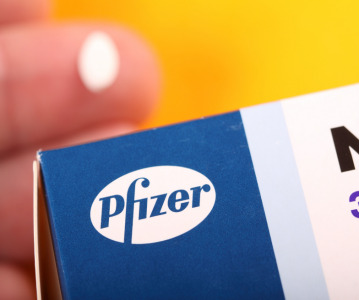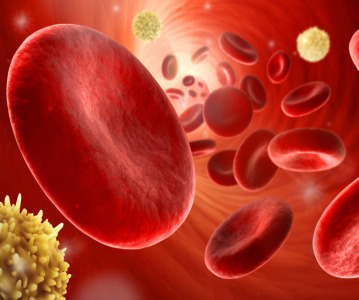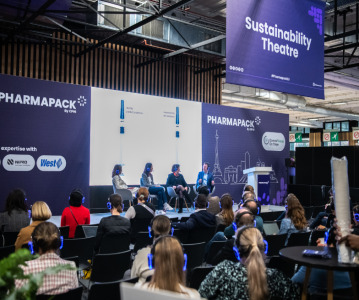Algorithm accelerated: machine-learning may reduce drug formulation development times
.png)
Machine-learning models demonstrate the potential to accelerate drug formulation discovery and development for long-acting injectables.
Scientists at the University of Toronto Leslie Dan Faculty of Pharmacy have tested and demonstrated the successful use of machine-learning models to aid in the design of long-acting injectable drug formulations. The research has potential to accelerate drug development times and reduce costs.
Long-acting injectables encompass advanced drug delivery systems that release the therapeutic component of the drug over long periods of time, allowing for a prolonged therapeutic effect. Such injectables can increase patient adherence and increase therapeutic efficacy by injecting close to the site of action. A reduction of side effects has also been reported. These advantages have positioned long-acting injectables as one of the most promising modes of administration for chronic diseases. However, one of the challenges associated with long-term injectables involves achieving the optimal amount of drug released over a specified period, requiring drug formulation candidates to be developed, characterised, and authorised through extensive experiments. As a result, bottlenecks within the development of these therapeutics have increased more than other types of drug formulations.
Professor in pharmaceutical sciences at the University of Toronto Christine Allen commented that “This study takes a critical step towards data-drive drug formulation development with an emphasis on long-acting injectables. We’ve seen how machine-learning has enabled incredible leap-step advances in the discovery of new molecules that have the potential to become medicines. We are now working to apply the same techniques to help us design better drug formulations and, ultimately, better medicines.”
The team at the University of Toronto trained and evaluated 11 different models of machine-learning tools to accurately predict the rate of drug release. These models included multiple linear regression, random forest, and light gradient boosting machine, among others. Results provided by the models’ test set were compared with previous experimental data, with tree-based models delivering the most accurate results. Further analysis of the data sets were able to extract drug design criteria from the machine-learning models. In particular, the light gradient boosting machine-learning model was utilised to design a long-acting injectable formulation for an ovarian cancer drug currently available. The drug resulting drug release rate was further tested and validated by the light gradient boosting machine model. The formulation produced the slow-release rate sought after by the researchers. Pauric Bannigan, a research associate at the University of Toronto, stated: “This [is] significant because in the past it might have taken us several iterations to get to a release profile that looked like this. With machine-learning, we got there in one.”
While challenges remain for the complete usage of machine-learning to reduce reliance on trial-and-error testing for the development of long-acting injectables, mainly due to the lack of open-source data available for pharmaceutical sciences, the team hope to work towards this development of robust databases in pharmaceuticals. “For this study, our goal was to lower the barrier of entry to applying machine-learning in pharmaceutical sciences...We’ve made our data sets fully available so others can hopefully build on this work. We want this to be the start of something and not the end of the story for machine-learning in drug formulation,” Bannigan stated.
Source: University of Toronto scientists use machine | EurekAlert!
Related News
-
News US FDA adds haemodialysis bloodlines to devices shortage list
On March 14, 2025, the US FDA published an open letter to healthcare providers citing continuing supply disruptions of haemodialysis bloodlines, an essential component of dialysis machines. -
News Women in Pharma: Manufacturing personal and team success
Our monthly Women in Pharma series highlights the influential lives and works of impactful women working across the pharmaceutical industry, and how the industry can work towards making the healthcare industry and workplace more equitable and inclusive... -
News Pfizer may shift production back to US under Trump pharma tariffs
At the 45th TD Cowen annual healthcare conference in Boston, USA, Pfizer CEO Albert Bourla outlined the potential for Pfizer to shift its overseas drug manufacturing back to the US as pharmaceutical industry players weigh their options against Presiden... -
News Experimental drug for managing aortic valve stenosis shows promise
The new small molecule drug ataciguat is garnering attention for its potential to manage aortic valve stenosis, which may prevent the need for surgery and significantly improve patient experience. -
News Women in Pharma: Connecting accessible pharma packaging to patients – a Pharmapack Special
Throughout our Women in Pharma series, we aim to highlight how CPHI events encourage discussions around diversity, equity, and inclusion initiatives in the pharmaceutical industry. -
News Vertex Pharmaceuticals stock jumps as FDA approves non-opioid painkiller
UK-based Vertex Pharmaceuticals saw their stock shares soar as the US FDA signed off on the non-opioid painkiller Journavx, also known as suzetrigine, for patients with moderate to severe acute pain, caused by surgery, accidents, or injuries. -
News Trump administration halts global supply of HIV, malaria, tuberculosis drugs
In various memos circulated to the United States Agency for International Development (USAID), the Trump administration has demanded contractors and partners to immediately stop work in supplying lifesaving drugs for HIV, malaria, and tuberculosis to c... -
News 2024 Drug Approvals: a lexicon of notable drugs and clinical trials
50 drugs received FDA approval in 2024. The centre for biologics evaluation and research also identified six new Orphan drug approvals as under Biologics License Applications (BLAs). The following list picks out key approvals from the list, and highlig...
Recently Visited
Position your company at the heart of the global Pharma industry with a CPHI Online membership
-
Your products and solutions visible to thousands of visitors within the largest Pharma marketplace
-
Generate high-quality, engaged leads for your business, all year round
-
Promote your business as the industry’s thought-leader by hosting your reports, brochures and videos within your profile
-
Your company’s profile boosted at all participating CPHI events
-
An easy-to-use platform with a detailed dashboard showing your leads and performance







